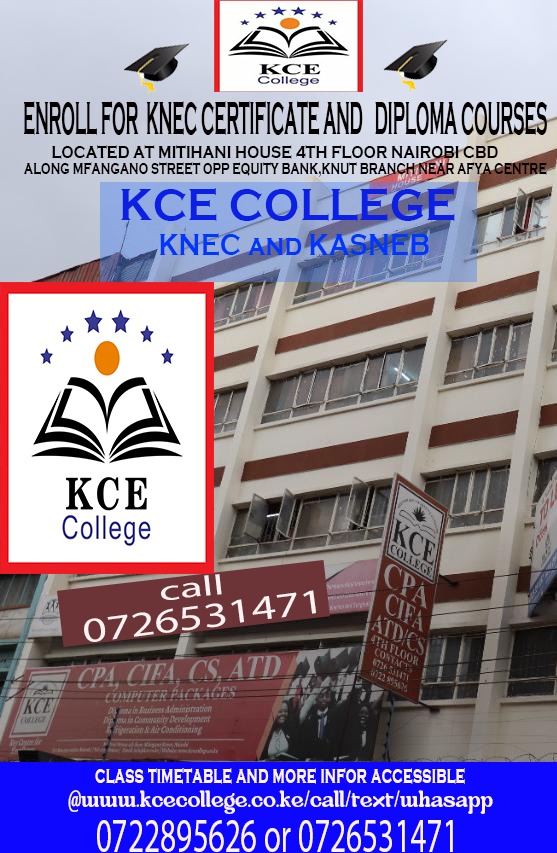Branch Banking: Law and Practice November 2018 Past Examination Question Paper – KNEC
This Past Paper examination was examined by the Kenya National Examination Council (KNEC) and it applies to the following courses:
Note: To easily navigate through the KNEC Past Examination Paper Pdf below, Mobile phone users are advised to use Mozilla or Chrome browsers
QUESTION ONE
(a) Outline five ways in which a power of Attorney may be determined. (10 marks)
(b) (i) In relation to direct debits, highlight three instances when the bank must reimburse a customer the debits passed on to an account. (6 marks)
(ii) Outline four reasons that may make a bank return direct debits unpaid.(4 marks)
QUESTION TWO
(a) To establish beyond any doubt that a share certificate is intended to be given as security, the bank usually takes a signed memorandum of deposit from its customer.
Explain five benefits of undertaking such course of action. (10 marks)
(b) Highlight five instances when the relationship between the banker and the customer is that of the customer as principal and the banker as agent. (10 marks)
QUESTION THREE
(a) Fleroh, Wameh and Pajih are the trustees of a trust account at your bank. Today they have visited the bank asking for an advance of Ksh 1.5 million for their personal use. Explain the banking principles applicable in this case. (10 marks)
(b) Section 4 of the cheques Act 1957 protects the collecting banker where it acted in good faith and without negligence.
(i) Citing relevant case or section, explain the meaning of each of the following terms:
(I) good faith; (2marks)
(II) without negligence. ‘(4 marks)
(ii) Outline two instruments covered by the section mentioned above. (4 marks)
QUESTION FOUR
(a) Describe the procedure followed by the banks in releasing a legal assignment on a life policy. (12 marks)
(b) Highlight four challenges that may be faced by a bank that pays a post dated cheque. (8 marks)
QUESTION FIVE
(a) A joint account has been opened in the names of Mwangi, Aron and Chuso at your bank for which joint and several liability has been admitted. Mwangi maintains his personal account with your bank, but Aron and Chuso maintain their accounts elsewhere.
Your head office has advised today that this morning a bankruptcy order was made against Mwangi. You have established that the joint account is Ksh 100,000 overdrawn and Mwangi’s personal account is overdrawn by Ksh 10,000. Mwangi has given the bank security in his own name valued at Ksh 40,000.
Describe the procedure applicable in this case. (10 marks)
(b) Highlight five duties of a banker to its customer. (10 marks)
QUESTION SIX
(a) Towell operates a sole account with a third party authority at your bank. Today, you have received a notice of his mental incapacity. You have established that he has an outstanding loan of Ksh 600,000 and had a guarantor.
Explain the position that should be taken by the bank with regard to the following:
(i) third party authority; (8 marks)
(ii) guarantor. (4 marks)
(b) Outline four disadvantages of bank guarantees as a form of security. (8 marks)
QUESTION SEVEN
(a) Kimeyo, a Kenyan athlete, deposited a gold trophy he won in a competition for safe custody with your bank.
(i) Explain the kind of banker-customer relationship established above.
(ii) Explain two possible breaches that the bank should avoid with regard to the above contract. (4 marks)
(b) Explain four documents that are required by a bank from a customer opening a limited liability company’s current account.
